What’s in Your Livestock Shed visits a purpose-built calf building
Investing in a purpose-built calf-rearing shed with capacity for 250 animals has accelerated expansion at Seimon and Eleanor Thomas’ Pembrokeshire dairy farm.
At 750 cows, the herd at Drysgolgoch, Llwyndrain, is now the world’s largest registered pedigree herd of Dairy Shorthorns.
The calf housing was part of a major upgrade of infrastructure which included a 70-point rotary parlour and a calving shed.
There have been almost no cases of pneumonia or scours in calves since it was built. The Thomases and their son, Sion, and daughter, Hanna, showed Farmers Weekly around.
See also: A guide to effective cleaning of calf housing
Farm facts
- 486ha (1,200 acres) farmed
- Stocking rate on grazing platform: 4 livestock units (LU)/ha; 2.1LU/ha across the farm
- Closed herd
- 22% herd replacement rate
- 6,000 litres/year average milk yield, with 4,000 litres from forage
- 4.1% butterfat and 3.45% protein
- 1t concentrates fed a cow a year
- Milk sold to Glanbia
Why did you build the shed?
Calves were being reared in a few different sheds and that meant moving milk around in buckets.
This did not make the job easy or pleasurable and the sheds were not really designed for rearing calves, so calf health was not as good as we wanted it to be.
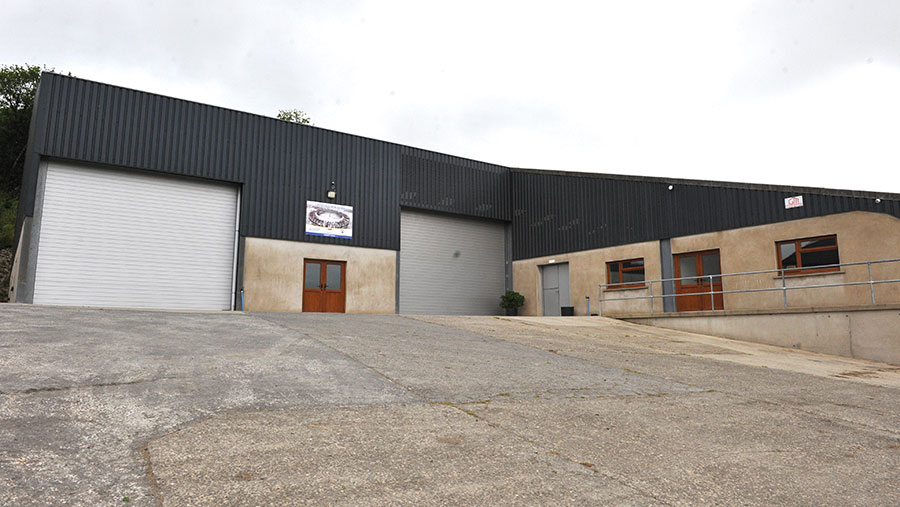
© Debbie James
How much did it cost?
The shed was part of a significant investment in our dairy infrastructure in 2015.
Fitting out the calf shed cost us £85,000 at that time; it could be double that now.
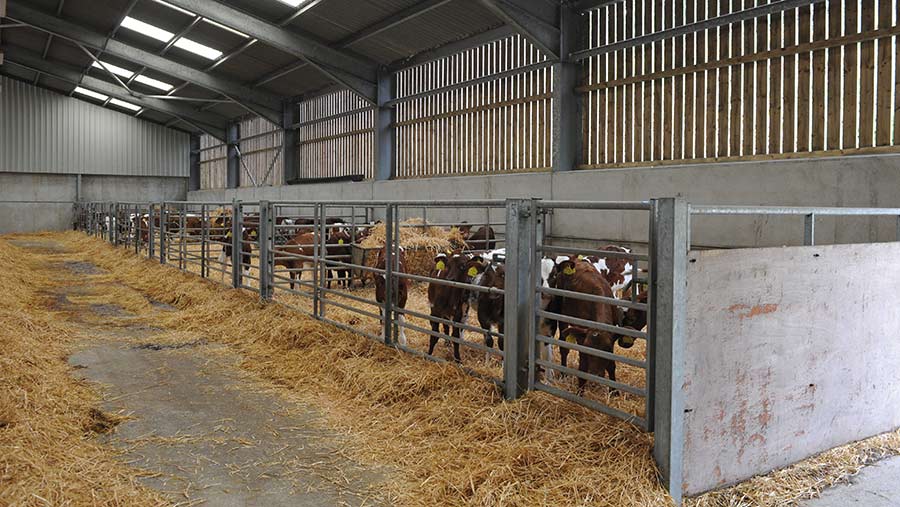
© Debbie James
How did you design the unit?
We picked up some ideas by visiting other farms, but we already had a firm idea of what we wanted.
A priority was to have the calf shed, the parlour and the calving shed on one level, with no steps or ramps, to make management easy.
We also wanted all those facilities to be under one roof, but to have the calf and cow areas completely separated so they would not be sharing the same air space.
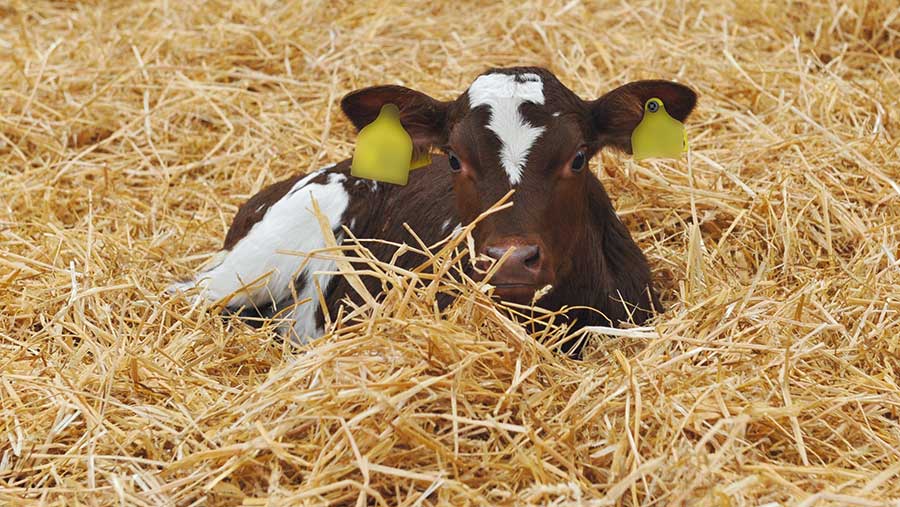
© Debbie James
Tell us about the build specifications
The shed is 6.1m high to the roof apex. It would not be as high if it was a standalone shed – it had to be that height because we had all the facilities under one roof. But it makes the building nice and airy.
There are some small pens that the calves go into individually or in pairs for at least their first three feeds.
They then move into bigger pens, each measuring 4.5×4.5m, once they are stronger. There are 16 of these.
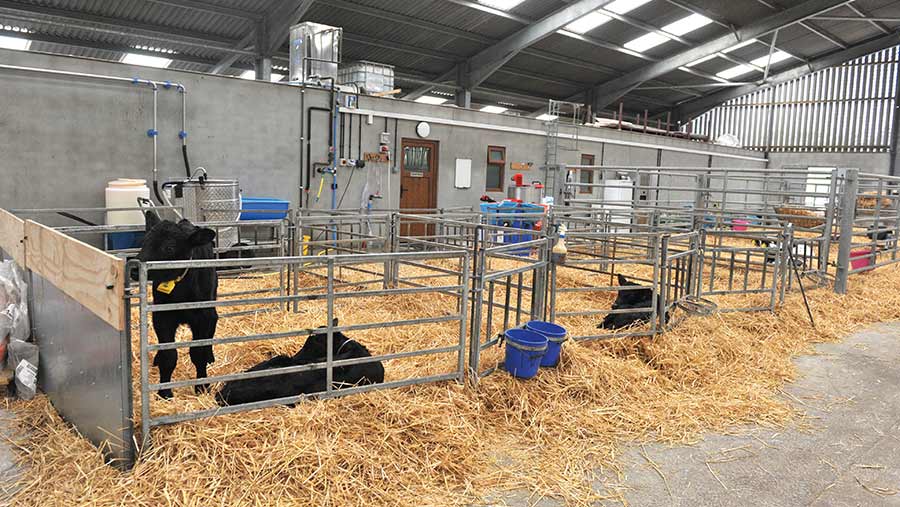
© Debbie James
We have more calves born in the spring, and that can put pressure on space at that time of the year. But we can turn the oldest heifers out to grass to make room for the newborns coming in.
We only group 10-12 calves in each pen to give them plenty of space to run around and to socialise.
By the time they get their first feed in those pens they have built up a good hunger from the activity.
This is a huge benefit of bigger pens that are not crowded. It is also easier to observe the calves and pick up any issues promptly.
One wall is constructed from Yorkshire boarding and the other of perforated corrugated tin to aid ventilation. The pine (gable) ends are made from metal box profile cladding.
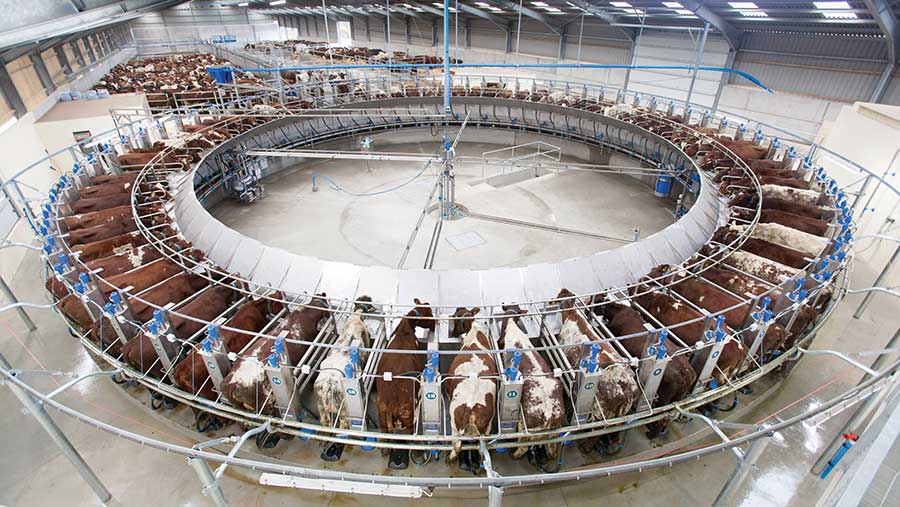
© Debbie James
Who built it?
GM Engineering of Ffostrasol.
What’s your favourite feature?
The gates at the front of the pens have been custom-made, with the gap between the top rail and the one underneath bigger than a standard gate.
This makes it easy to slot the teat feeder over the bar. It also means no one has to climb the gates to hook the feeders in place, as the job can be done while standing on the floor outside the pen.
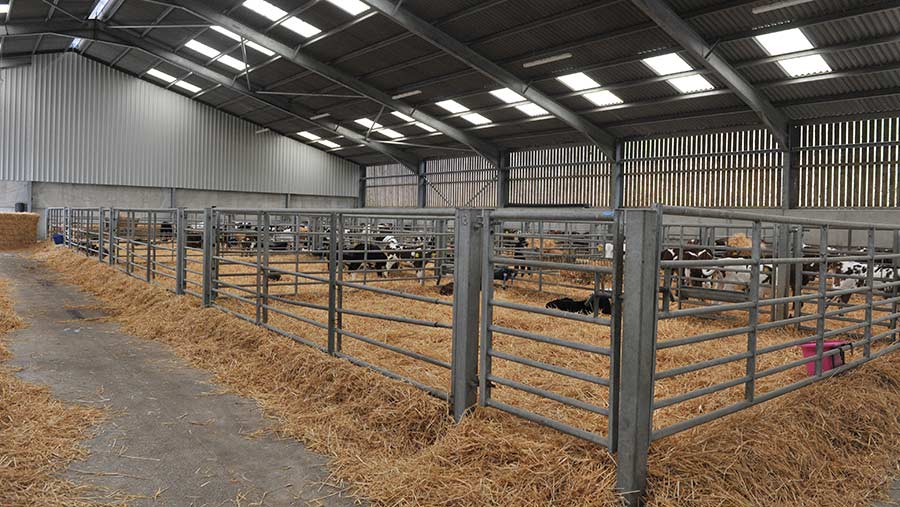
© Debbie James
Both middle bars of the gate can be adjusted up or down, or removed, depending on the age or size of the calves.
They work very well, and although they were made from scratch, they cost about the same as a conventional gate because they have fewer bars, so less steel was needed.
What’s been your best buy and why?
Two milk taxis which each hold 280 litres and are used to fill the feeders.
The parlour is fitted with a transfer line that pumps milk directly into holding units in the shed.
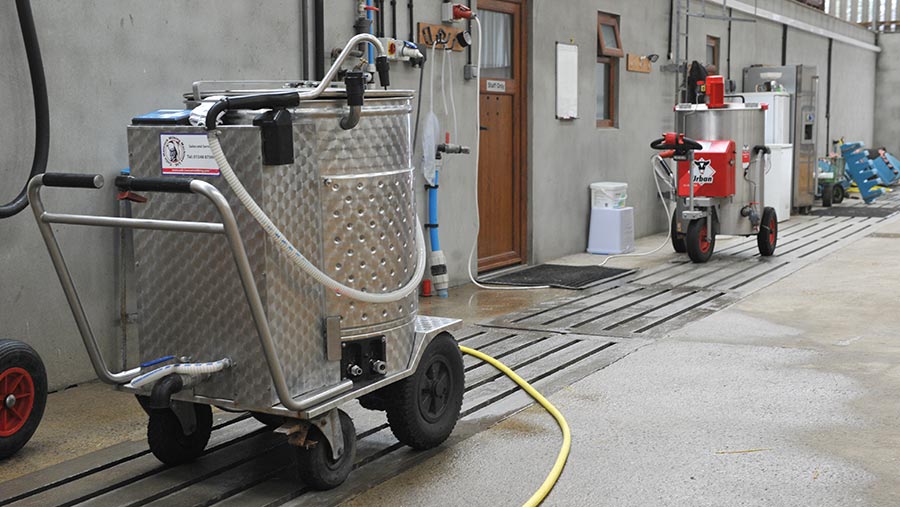
© Debbie James
The taxis heat, pasteurise and dispense the milk into the multi-teat feeders according to the age and number of calves in the group.
What couldn’t you live without?
The slight gradient at the front of the pens, which drains the moisture out of the pens and keeps them dry.
The moisture drains into a channel at the front and is carried to the slurry store.
What would you do differently if you were to do it again?
Build it bigger with more pens.
A cleaning station at waist height would be useful, too, instead of cleaning everything on the floor, but that is possible and something we will probably do.
Washing the teats and bottles is as important to calf health as feeding, so anything that can be done to improve that process is worth spending money on.
Has any design aspect/buy helped ease management or improve animal performance?
The open ridge on the fibre cement roof provides good ventilation without the need for fans or air conditioning.
The two roller doors at the front of the shed also help with the movement of air during warmer weather – it can get quite stuffy in April when our spring-born calves are in there, so we open the doors and that freshens the air.
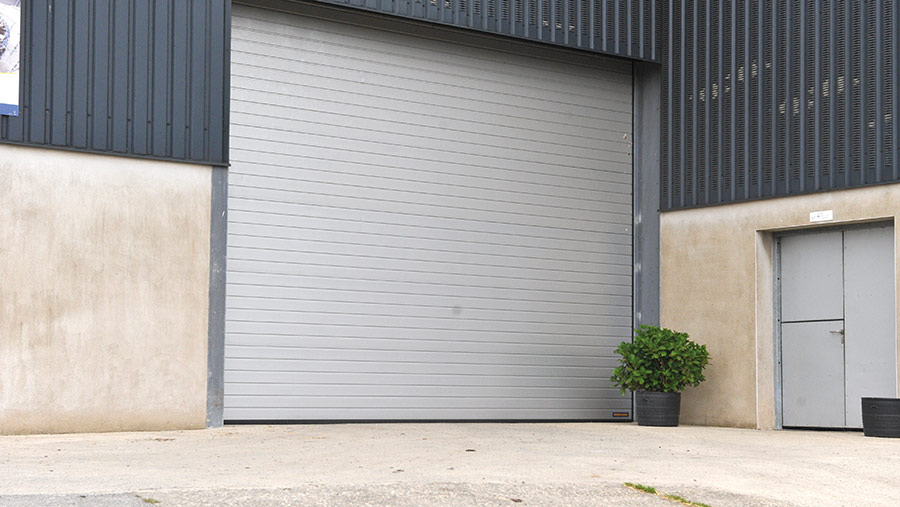
© Debbie James
Pneumonia is no longer an issue – the calves are getting a brilliant start and that benefit stays with them right through their lives.
Some cows in the herd are in their ninth or tenth lactation – the herd average is six.
Calf-rearing protocols
Newborn calves are bottle-fed four litres of colostrum in the first hour, followed by transition milk for two days.
Intakes after this are two 2.5-litre feeds a day of either cow’s milk or calf milk replacer, depending on the milk price and seasonality price curve.
Once-a-day feeding is introduced after six weeks.
Spring-born calves are turned out to grass at four weeks old with milk fed from a trailed feeder until weaning at eight to 10 weeks, once they have doubled their birthweight and are eating about 1.5kg of cake.
Autumn-born calves are housed until the following spring.
Heifers calve at 22-24 months, in a spring and autumn block, with the spring calvers calving from 1 March over 10 weeks and the autumn herd from 1 September over 12 weeks.
